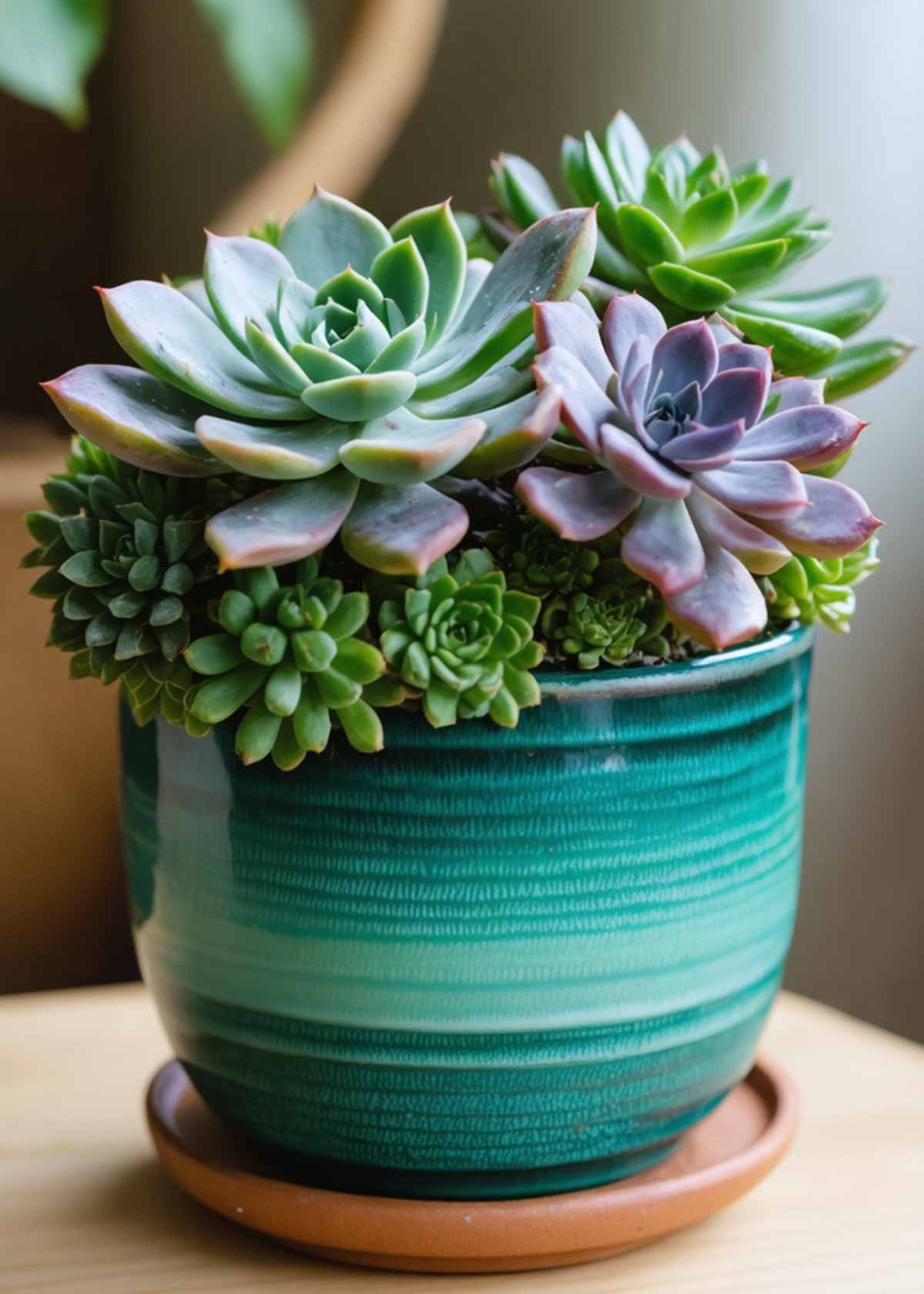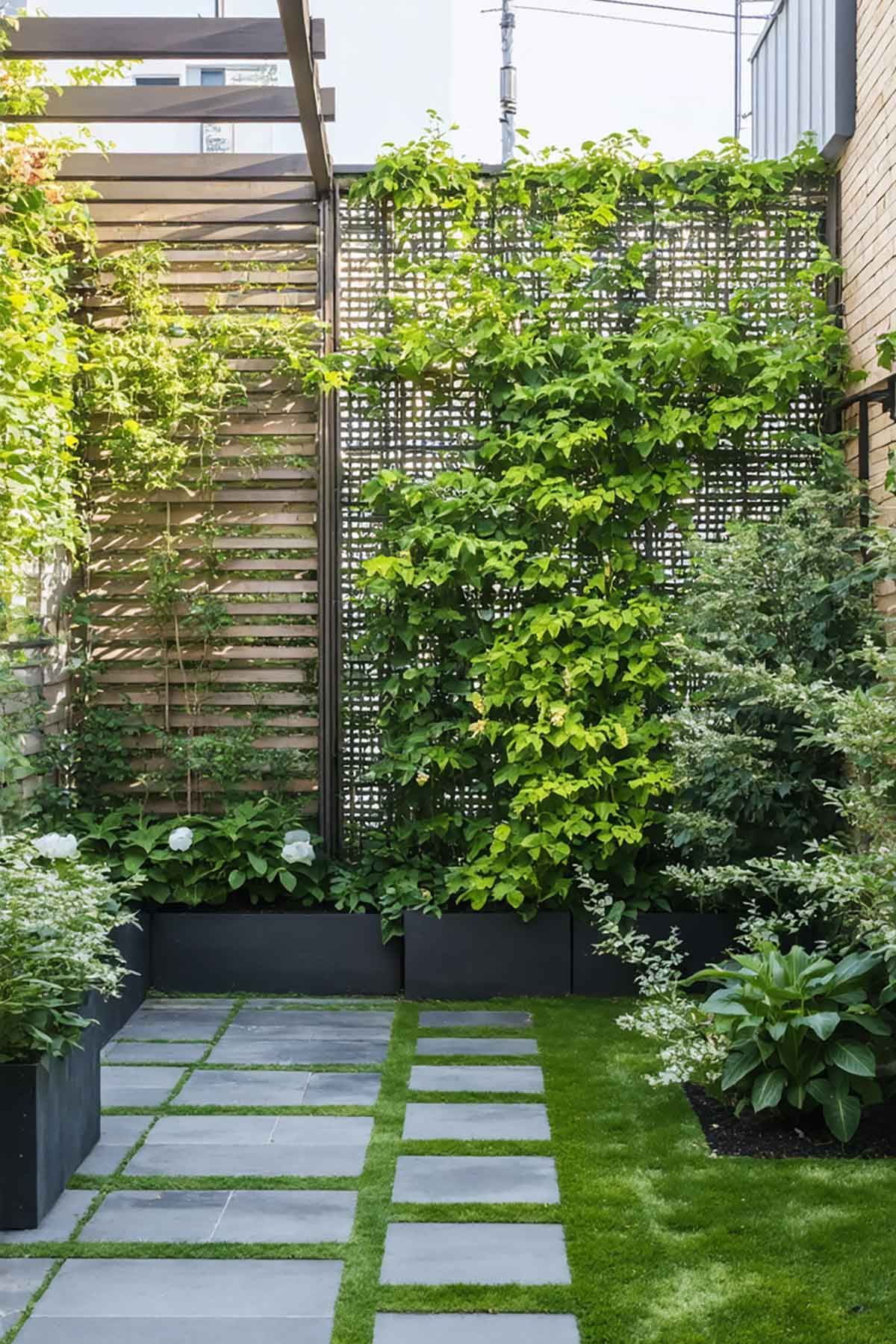Why Is My Green Succulent Turning Purple?
Understanding The Colourful Transformation Of A Green Succulent
Have you ever gazed at your once vibrant green succulent only to notice it’s taking on a mysterious purple hue? As a long time succulent enthusiast, I remember the first time I witnessed this transformation in my own collection. That initial moment of panic “Is my plant dying?” quickly turned into fascination when I discovered the truth behind this colourful change.
Succulents are nature’s chameleons, and that purple tint isn’t necessarily a warning sign. In fact, it might be your plant’s way of showing off! Let’s explore why your green succulent is turning purple and what it means for your plant’s health.
A green and purple succulent in a blue clay pot
The Science Behind Succulent Colour Changes
Natural Stress Responses in Succulents
Succulents are masters of adaptation. Unlike many houseplants that wilt at the first sign of stress, succulents respond to environmental changes by altering their appearance often in spectacular ways. The purple colouration you’re seeing is typically caused by compounds called anthocyanins, which act as the plant’s natural sunscreen.
When a succulent produces these purple, red, or blue pigments, it’s usually responding to some form of environmental stress. But don’t worry, “stress” in the plant world doesn’t always equate to harm. Think of it as your succulent’s way of adjusting to its surroundings.
| Cause | Explanation | Concern Level |
| Sun Exposure | Increased light triggers protective pigments | Low to Moderate |
| Temperature Changes | Cold weather often induces purple colouration | Low (if temporary) |
| Drought Conditions | Water restriction can cause colour shifts | Moderate |
| Nutrient Levels | Phosphorus deficiency or other imbalances | Moderate to High |
| Seasonal Changes | Natural response to changing seasons | Low |

Succulents in a variety of colour in an Australian garden
Sun Stress: The Most Common Reason
The number one reason your green succulent is turning purple is likely sun exposure. Just like humans get a tan to protect our skin, succulents produce anthocyanins to shield their tissues from intense light.
“A succulent’s purple colouration is often its natural sunscreen beautiful adaptation rather than a cause for alarm.”
If your formerly green plant was recently moved to a sunnier location, this is almost certainly the cause. Some species, like Echeveria, Sedum, and Sempervivum, are particularly known for their dramatic colour transformations in response to sun.
While some sun stress is normal and even desirable for bringing out vibrant colours, too much intense sunlight can be harmful. Signs your succulent is getting too much sun include:
- Bleached or whitened patches
- Brown, crispy leaf tips
- Wrinkled or shrivelled appearance despite watering
If you’re creating a low maintenance garden , finding the right light balance for your succulents is essential. Most colourful varieties need bright light to maintain their vibrancy without suffering from sunburn.
A purple succulent sitting on a window ledge in sunlight
Temperature’s Role in Purple Transformation
As temperatures drop, particularly during fall and winter, many succulents respond by producing anthocyanins. This is why the same plant might be green in summer but develop purple, red, or burgundy tints as the weather cools.
This temperature response is particularly common in:
- Aloe varieties
- Crassula ovata (Jade plants)
- Many Sedum species
- Sempervivum (Hens and Chicks)
The purple colouration serves multiple purposes during colder weather:
- Acts as antifreeze to protect cellular structures
- Helps the plant absorb more warmth from sunlight
- Slows down metabolism to conserve energy
For those interested in vertical gardens for small spaces , understanding how temperature affects succulent colouration can help you create dynamic displays that change with the seasons.
Drought Stress and Watering Practices
Succulents are desert plants adapted to survive with minimal water. When they experience drought conditions, many species respond by producing more anthocyanins and carotenoids, which can turn leaves purple or reddish.
If your succulent has been underwatered and is turning purple, you might notice:
- The colour change starts at the leaf tips
- Leaves feel thinner or less plump
- The plant may have a slightly shrivelled appearance
While succulents are drought tolerant, extended periods without water can eventually harm them. Finding the right watering balance is key to maintaining healthy plants.
A good rule of thumb: water thoroughly but infrequently, allowing the soil to dry completely between waterings. This approach aligns perfectly with the principles of creating
top garden layouts for urban homes where water efficiency is often a priority.

Nutrient Factors Affecting Succulent Color
Nutrient availability plays a significant role in succulent colouration. Phosphorus, in particular, has a strong influence on purple pigmentation.
Phosphorus Deficiency
When succulents lack sufficient phosphorus, they often develop purple or reddish hues, particularly on the undersides of leaves. This is different from sun induced colour changes, which typically appear on the tops of leaves or at the tips.
Signs of phosphorus deficiency include:
- Purple colouration primarily on lower leaves
- Stunted growth
- Darker green leaves before turning purple
Other Nutrient Considerations
Nitrogen levels also affect colouration. High nitrogen can promote lush green growth, sometimes at the expense of the vibrant colours many succulent lovers desire. This is why some growers intentionally limit fertilizer to encourage more dramatic colouration.
A green succulent in a terracotta pot turning purple on the edges
Is Purple Coloration Normal for Your Succulent Species?
Before becoming concerned about colour changes, it’s important to research your specific succulent variety. Many species naturally develop purple colouration as they mature or during certain seasons.
Some naturally purple tinted succulents include:
- Echeveria ‘Perle von Nürnberg’
- Sempervivum ‘Purple Beauty’
- Sedum ‘Purple Emperor’
- Graptopetalum paraguayense (Ghost Plant)
- Certain Kalanchoe varieties
If you’re planning to incorporate succulents into a bohemian gallery wall or other decorative display, choosing varieties known for their colour changing properties can add an element of living art to your space.
When to Be Concerned About Purple Colouration
While purple colouration is usually harmless or even desirable, there are situations where it might signal a problem:
- Sudden colour change accompanied by wilting This could indicate root rot or other serious issues
- Purple spots rather than overall colouration May signal pest damage or fungal infection
- Purple colouration along with soft, mushy leaves Often indicates overwatering and potential rot
- Very dark purple/black colouration Could be severe sun damage or frost damage
How to Respond to Your Succulent’s Colour Change
If You Love the Purple Colour
If you’re enjoying your succulent’s new purple hues, here’s how to maintain them:
- Provide plenty of bright, indirect light
- Allow for slight drought between waterings
- Expose to cooler temperatures when possible (without risking frost damage)
- Use a low nitrogen fertilizer specifically formulated for succulents
If You Prefer the Original Green
If you’d rather return your succulent to its greener state:
- Gradually move it to a location with less direct sunlight
- Ensure consistent watering (while still avoiding overwatering)
- Maintain warm, stable temperatures
- Consider a balanced fertilizer with adequate phosphorus
For those working with limited space, implementing these care adjustments can be part of a broader strategy for organizing small spaces efficiently while maintaining plant health.
Embracing the Beauty of Stress Coloration
Many succulent enthusiasts intentionally “stress” their plants to bring out vibrant colours. This practice, when done carefully, doesn’t harm the plant but enhances its ornamental value.
Popular stress techniques include:
- Strategic sun exposure
- Controlled drought periods
- Temperature fluctuations between day and night
Remember that while stress colouration is beautiful, extreme stress can harm your plants. The goal is to find the sweet spot where your succulents display vivid colours while remaining healthy.
A collection of succulents in varying colours in a garden

A green and purple succulent in a blue clay pot
More Plant Articles You Might Like

About The Author
I'm Channing and I am the driving force behind Platypus and Pine. I've had over 30 years of experience in designing, renovating and customising Australian homes.
I've used everything from aluminium to velvet as decor choices and love a wide variety of styles and themes.
My absolute favourite is Mid Century Modern and I was fortunate enough to spend 2 weeks in Palm Springs for Modernism week just last year.



